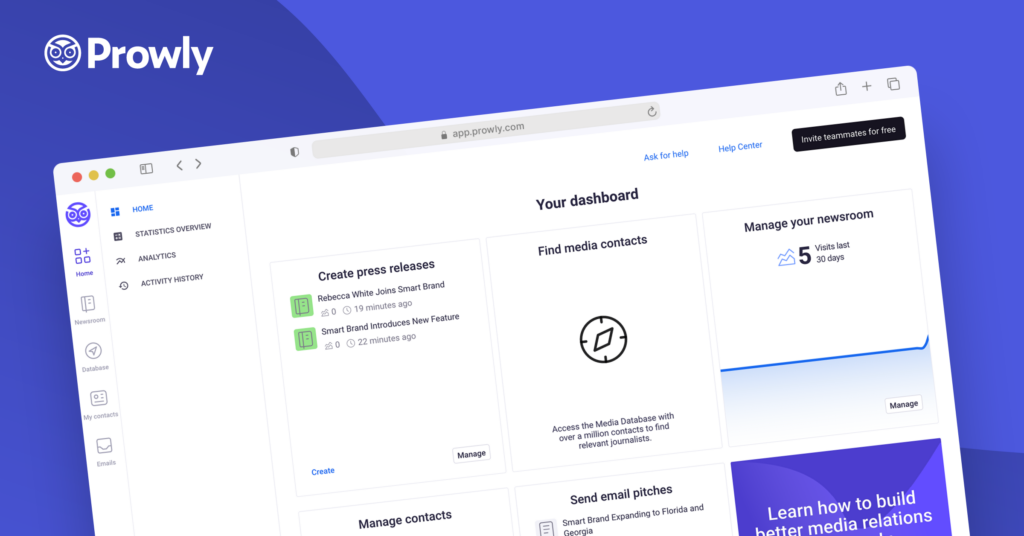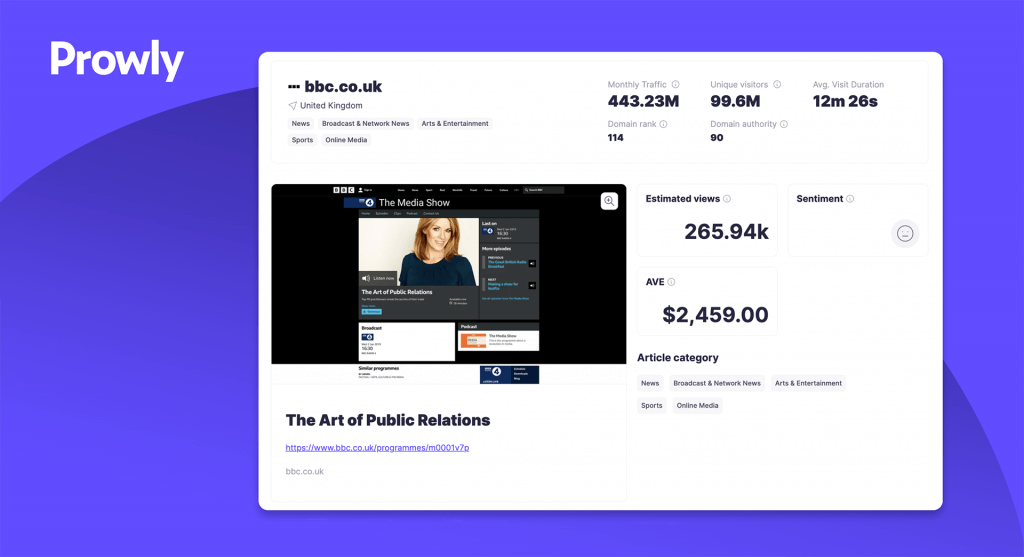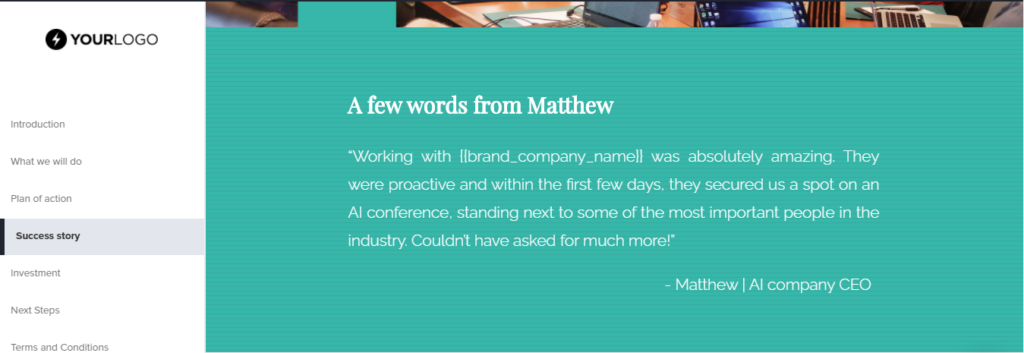Did you know when you got into PR agency work how much selling would be involved? Not just selling your pitches to the media, but selling prospective clients on signing new PR contracts with you.
It’s the foundation of your entire PR business, and it ultimately determines whether your agency will grow, become stagnant, or fail. So what to do when you’ve made it past the initial email requests and Zoom introductions with a prospective client?
In this article, you’ll learn 7 things you can do to enhance your PR proposal process and get your PR contract signed quickly once it’s delivered:
There are no magic tricks here: just clear steps that answer the client’s questions before they’ve even asked them (although you may come off looking like a magician for this!).
How to get your PR contract signed
1. Introduce the account lead
When you’re an agency owner, or a senior manager leading the proposal process, most clients will want to work specifically with you. After all, you’re the most senior person on the team, and they’ve become familiar with you during the proposal process.
However, that’s not how it usually works. To focus your work on your PR agency’s strategy and growth, you need to assign new accounts to your agency’s account executives. So it’s important that early on in the proposal process, you bring the planned account executive into the client conversations.
Introduce the account executive to the potential client, share why you’ve specifically matched them with the client, and enthusiastically explain how the account executive’s unique work experience makes them the best person on your team to take the lead.
This will set the client’s expectations from the beginning and ensure they start Day 1 with your agency on a good note. No bait and switch here!
2. Maintain a great website
Now that you’ve presented a formal proposal, your potential client is probably running it by their colleagues and supervisor. Although your direct contact may be ready to sign your PR contract today, they likely need to convince others on their team to sign off on the expense.
Here’s how you can help them out: make it very easy for their colleagues and supervisors to say yes by having a great-looking website.
To do this, keep your PR agency website frequently updated so it looks modern and professional. Use simple menu navigation so it’s easy for visitors to find your past and current client roster list. Include photos and friendly intros of your team and an About Us page that makes working with your team sound easy and fun.
Include links to your latest and greatest media placements too. You want second-approvers to decide within minutes that working with your PR agency is a no-brainer.
3. Outline clear and realistic results
Prospective clients will often ask for specific expected results, but we know that no honest and transparent PR proposal or PR contract can include guaranteed placements. This is a point that you need to expressly share with them.
Instead, set a solid expectation that your agency will provide consistent, measurable, best-practice PR efforts that should result in media placements over time.
Take the time to explain your professional PR tools to them. This is especially easy to do when using an automated PR software like Prowly. Share how you craft brand stories and press releases from the client’s latest news, build well-matched media lists from your in-depth database, and create dynamic online pressrooms that give journalists everything they need to write about your client in one place.

When you highlight how professional and specialized your PR systems are, your clients will understand that although they can’t be promised, media mentions will happen.
4. List what you need to get started
Make it easy for the client to say yes to your PR proposal and get started immediately by providing a list of what you’ll need at signing.
Include logo files, social media logins, and PR spokesperson contact info. You’ll also want to see recent press releases produced in-house and learn of any press contacts they’ve already worked with.
This detailed list tells the prospective client that you’re all set to get started right away, from the moment they sign and pass over their existing work.
Let them know they can have their brand’s PR efforts off their plate today, with a big sigh of relief. You’ve got it from here!
5. Provide reporting details
Structure and stability make clients feel comfortable turning work over to an outside agency. They provide reassurance that work is being performed, even if they can’t see it every day.
This is why outlining your reporting frequency and format will get you closer to a signed PR contract.
If you’re looking for a powerful tool to create client-worthy PR Reports — read our recent article “The best PR reporting tools available to you right now”. You will learn everything you need to know about the best PR reporting tools.
The best part is that you get to set the stage. Include in your proposal the frequency of client check-in calls (typically weekly the first month, then monthly), how often PR reports will be delivered, and in what format.

6. Include an expiration date
As a marketing and PR expert, you know from experience that all humans naturally react to the idea of scarcity. The thought of scarcity makes us act on things we believe we’ll miss out on if we wait too long.
This is why adding an expiration date to your PR proposal can get you a signed PR contract more quickly. It also shows clients that you have a limit on clients you can bring into your agency, so they should claim their offered spot on your roster list right away.
Outside of tempting prospective clients to sign with this expiration date, it’s a good practice in general. Your PR agency rates may change in the coming months, and you’ll want the flexibility to update the rates if the potential client sits on your proposal for months.
7. Provide references and social proof
All of us prefer to know that other companies have already vetted our prospective business partners for us. This is what makes Google and Yelp business reviews so popular. We’re very likely to seek out reassurance that the new business partner we’re considering is credible and experienced.
This is what makes client references and testimonials so important.
The good news is that it’s easy to be proactive on this step, and you can make this part of the consideration process very simple for the prospective client.
First, automatically include two references in the PR proposal so they’re available before the client even thinks to ask. Preferably, the references your provide are involved in a similar sector as the prospective client, like retail or tech.

Second, make sure your website includes client testimonials so that colleagues and supervisors who are finalizing an approval with your contact can easily see how established and credible your agency is.
Get that PR contract signed
You now have 7 surefire tactics for getting your prospective client closer to moving forward with your PR proposal and signing your PR contract.
Test a few out, or apply them all to supercharge your proposal process. Here’s to lots of new clients ahead of you!
Cover photo by Gabrielle Henderson

